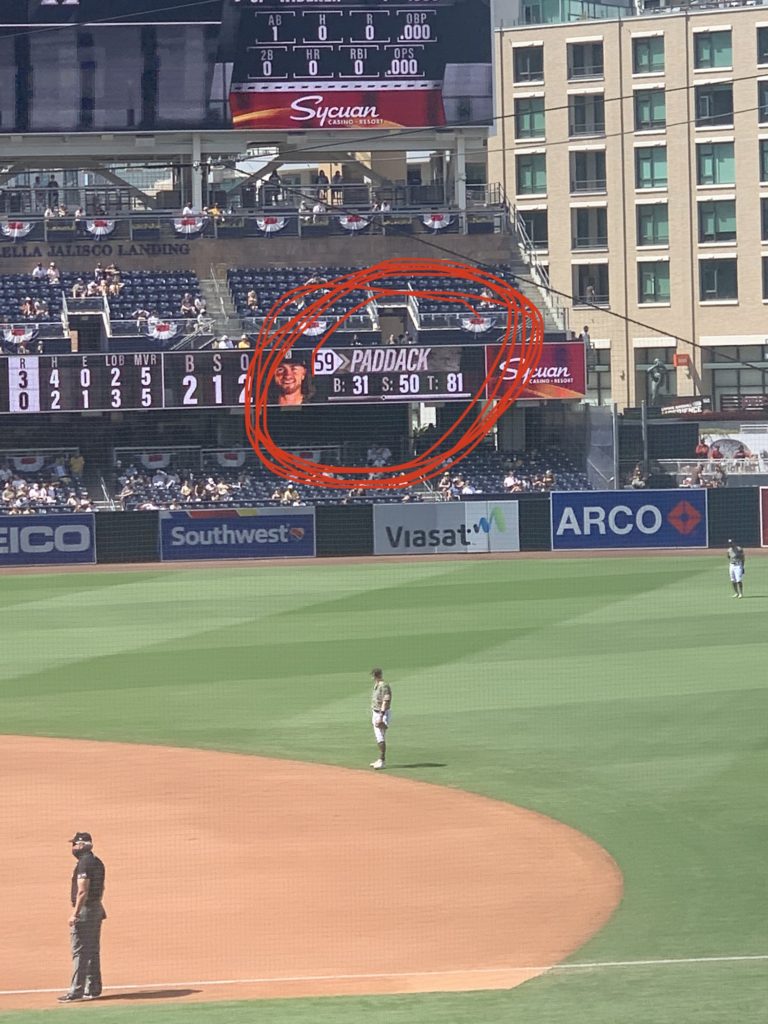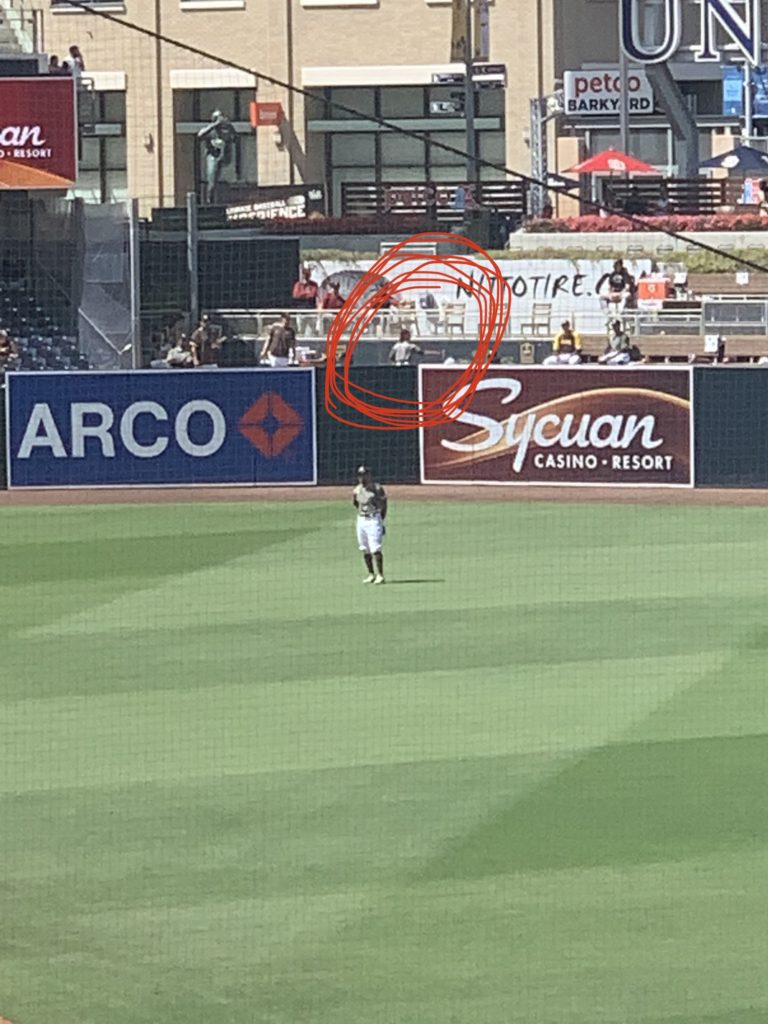As you all know, I'm a huge fan of Little League baseball but one area where the national organization is completely off its rocker is pitch counts.
Here's a picture of Padres starting pitcher Chris Paddack's pitch count into the 5th inning a couple weeks ago:

And here's the guy warming up because Paddack's pitch count was getting high:

Paddack wasn't struggling, he wasn't getting shelled, he was just getting to the point where he was starting to get tired.
And for the Diamondbacks, their starter was throwing a gem through 6 innings, allowing only 3 hits and 0 runs...his pitch count was 81 when they pulled him.
So, both MLB starters, throwing well, out of the game after 89 and 81 pitches respectively.
(Yes, I'm aware that the baseball strategy managers use with their pitching staff has changed in the last decade or so where starters are now only expected to go 5 innings followed by a parade of 1-inning relivers who all throw 184mph, but that doesn't change the fact that starting pitchers start to tire as they approach the 100 pitch mark.)
Now, let's look at the official Little League pitch count guidelines:
Ages 11-12 = 85 pitches per day
Ages 9-10 = 75 pitches per day
Ages 7-8 = 50 pitches per day
See the problem here?
For the most recent data I could find on pitch counts per start in the MLB, the average MLB team has their starting pitcher throw fewer than 100 pitches and I think it's safe to peg the average starting pitcher pitch count at 95 pitches.
That means that fully grown men, who also happen to be among the best athletes on planet, with bodies that have been specifically engineered to throw baseballs have approximately 95 pitches in them before they start to tire.
The pitch count recommend by Little League for an 11 year old? 85.
EIGHTY-FIVE.
Do we really think that an 11 year old body is 89% (85/95) as equipped to handle the physical stress of pitching as a 25 year old Major League body?
Oh, and when that MLB pitcher is done with his 95 pitches, does he go play Shortstop or Centerfield for the rest of the game?
Does he play 6 innings at Catcher 2 days later?
Or does he rest and recover for 4 full days before pitching again?
Exactly.
It's the same relatively insanity for letting a 9 year old throw 75 pitches.
Are 9 year old bodies 79% as developed and strong as fully grown adults?
Of course not.
But when we let kids throw way too many pitches, without enough rest after, while playing competitive baseball year-round how can we be surprised why 14 year old arms hurt everyday and 16 year olds are having Tommy John surgery?!?!?
Some national youth baseball organizations and travel ball tournaments don't have ANY pitch count or rest requirements! Insanity!
With all parts of the country now playing year round baseball of some sort, and with the organization (Little League) instituting the strictest pitch counts that are still too high in my opinion, it becomes our job as parents and coaches to protect our kid's arms.
My recommendations:
7-8 year olds: 40 pitches
9-10 year olds: 50 pitches
11-12 year olds: 60 pitches
Does this mean that when your 8 year old throws 43 pitches he's done irreversible damage too his arm? Of course not.
Does this mean that if your 11 year throws 59 pitches you don't need to monitor his rest after throwing? Of course not.
But I think reducing the number of pitches thrown, making sure there is proper rest after pitching, and taking the doctor recommended 2-3 MONTHS off per year from pitching would go a long way to ensuring young arms stay healthy.
As far as rest goes, I think the day after reaching the above limits should basically be a "no-throw" day. Day 2 after pitching could safely have some light throwing with most kids getting close to back to full strength by Day 3 and Day 4.
(Let me be clear, this is not medical advice but rather just my opinion having been around young arms for a very long time. That said, I'm pretty sure every orthopedist in America would agree that fewer pitches and more rest is absolutely the healthiest course of action for young arms and that the Little League pitch count limits are too high).
When parents ask me, "Hey Dan, how can I help my kid make the High School?" my response is always: "Make sure they still like baseball and want to tryout out when they're 15." I know that's not the answer they were probably looking for, but it's the truth. No matter what you do in Little League, Junior League, or travel ball if your son doesn't like baseball anymore when he's a teenager, guess what? He's not going to play.
(Hint hint: that's why having fun and developing a true love for the game should be the MOST important goal of Little League.)
A similar answer applies when it comes to arm care; if your son blows out his arm at age 15 from too many Little League pitches, I'm pretty sure he won't be playing High School baseball.
Limiting pitch counts to a greater extent than Little League requires not only protects young arms, but it forces us as coaches to develop other pitchers on our team and to give other kids a chance on the mound (both good things!).
I'm proud to say that so far on my Minor team this season, not one pitcher has gone past 45 pitches (including 9 year olds who are technically allowed to throw 75) and most outings are under 30 pitches, and only 1 inning long) as we try to give more kids an opportunity on the mound, while simultaneous doing our part to keep our players healthy for the long haul.
So, coaches; remember the health your pitcher's arms is more important than winning this game.
Parents, if your son had a rough outing on Monday where he threw 70 pitches, the solution is NOT to throw 50 pitches in the backyard on Tuesday to get him back on track! Nor is the way to prepare for a Saturday start to throw 60 pitches in practice on Friday!
It's important to take the long view here: it's absolutely possible to protect your pitcher's arms, play to win, and give other kids more opportunities to get on the mound all at the same time.
Let's do it!

One Reply to “Pitch Counts”
Great advice!